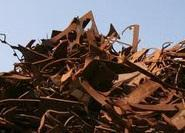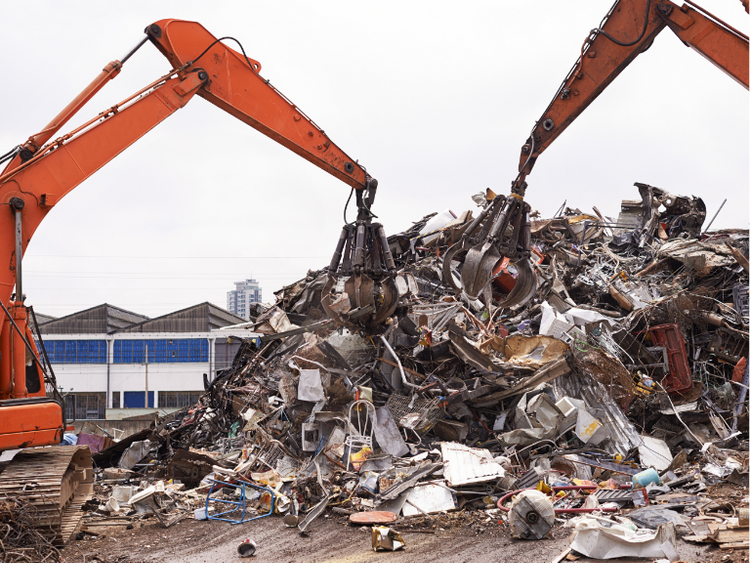Scrap Prices North America

Scrap Prices Poised to Jump in March; Pig Iron a Casualty of War?
Written by Tim Triplett
February 24, 2022
Steel Market Update sources expect ferrous scrap prices to rise by at least $30/GT, and probably more, in most regions next month, following substantial declines in January and February. On the metallics front, mills around the world are watching anxiously to see how the conflict in Ukraine will impact pig iron supplies and prices.
![]() “The price drops early in 2022 dramatically stunted the inbound flow of scrap into dealers’ yards. Scrap inventories across the dealer system are very low. Dealers have had no choice but to begin raising prices in anticipation of an up market next month. But inbound flows have not improved much in response, as suppliers wait to see if there will be more upside,” one scrap exec in the Northeast said.
“The price drops early in 2022 dramatically stunted the inbound flow of scrap into dealers’ yards. Scrap inventories across the dealer system are very low. Dealers have had no choice but to begin raising prices in anticipation of an up market next month. But inbound flows have not improved much in response, as suppliers wait to see if there will be more upside,” one scrap exec in the Northeast said.
Stronger demand for U.S. scrap overseas is adding to the upward pressure on prices, sources said. “Export demand in Turkey and Asia has improved over the course of February, with shred prices CFR Turkey now at least $35/GT higher today than at the end of January,” said one dealer. “I don’t know if they will go higher from here, but the U.S. shredded scrap price is at a discount to Turkey currently. When that has happened at various times over the past year, the U.S. market has moved higher to catch up.”
The main headwind for scrap remains tepid U.S. demand as finished steel prices try to find a bottom. “The bottom seems close. Once we get some steel buyers back in the market in the coming weeks and months, demand for U.S. scrap can be expected to improve and support scrap prices – at least until spring flows help to bring scrap supply back into balance with demand,” said one dealer.
Despite the fact that sheet prices are falling, long product prices are holding near record high levels, which is also helping to support scrap demand, especially for obsolete grades, noted CRU Senior Analyst Ryan McKinley.
The $60/GT drop in January, the surprisingly resilient export market and bad winter weather have combined to significantly reduce inbound scrap to domestic dealers and mills. The severe lack of flow has put many dealers behind on February contracts, which will need to be completed before receiving new March contracts. Mills are reporting much lower than expected February deliveries and many are actively seeking additional tons at a March TBD price. Regional shredders have already raised scale prices by $30-50/GT in effort to source more scrap, reported another dealer in the northern U.S.
“Expectations for March ferrous scrap prices are up $40-60/GT for obsoletes and up $20-30/GT for primes,” he added. “Expectations beyond March are cautiously bullish, buoyed by stronger order books at the mills and new capacity coming online in spring/summer.”
Pig Iron Market
The ongoing situation in eastern Europe is likely to help prop up prime grade prices in March and beyond as well, depending on how things play out, said CRU’s McKinley. “Both Ukraine and Russia are substantial pig iron exporters to the U.S. and Europe, so potential supply disruptions are causing buyers to look elsewhere for material. Following Russia’s invasion of Ukraine, the risk of substantial global pig iron shortages has risen greatly. We may see a massive deficit in global pig iron supply—meaning that mills that rely on it will need to use more prime grade scrap or other ore-based metallics.
McKinley added, “It is also important to note that both sit towards the bottom end of the steelmaking cost curve, meaning that disruptions would also likely cause a spike in global steel prices that would no doubt result in higher steel prices in the U.S.”
The pig iron situation is still developing, but it’s not going to be beneficial for U.S. buyers, added another source. “The last cargo from Russia was priced at $610/MT CFR and scheduled for March/April shipment. Is that cargo going to ship at all? We don’t know for sure yet. But the bookies would give odds against it.”
U.S. mills that depend on pig iron have increased their dependence on material from Russia and Ukraine over the last 10 years as low-phosphorus producers were brought down to just two in Northern Brazil. In an effort to obtain lower phos material, the percentage of imports from Russia and the CIS rose to well over 60%, he noted. “If this gets cut off for whatever reason, I don’t see how U.S. users can replace those tons. Yes, they could go back to higher phos South Brazilian or Indian material. But the quality of their HRC may suffer and they would have to compete with the Chinese and the EEC countries as well as Turkey. Needless to say, the price will be stratospheric.”
By Tim Triplett, Tim@SteelMarketUpdate.com

Tim Triplett
Read more from Tim TriplettLatest in Scrap Prices North America

HRC vs. prime scrap spread widens in June
The price spread between HRC and prime scrap widened in June.

Ferrous scrap pricing sideways in June
Ferrous scrap prices in the US have remained stable from May to June.

HRC vs. scrap spread widens over $150/ton in March
The HRC vs. prime scrap spread increased again in March.

HRC vs. prime scrap spread increases in February
The price spread between hot-rolled coil (HRC) and prime scrap widened in February ahead of the implementation of President Trump’s tariffs on steel.
HRC vs. prime scrap spread narrows again in January
The price spread between hot-rolled coil (HRC) and prime scrap continued to narrow in January, according to SMU’s most recent pricing data. While SMU’s average HRC price edged down week over week (w/w), it rose compared to a month ago. The January price for busheling also increased from December. Our average HRC price as of […]
